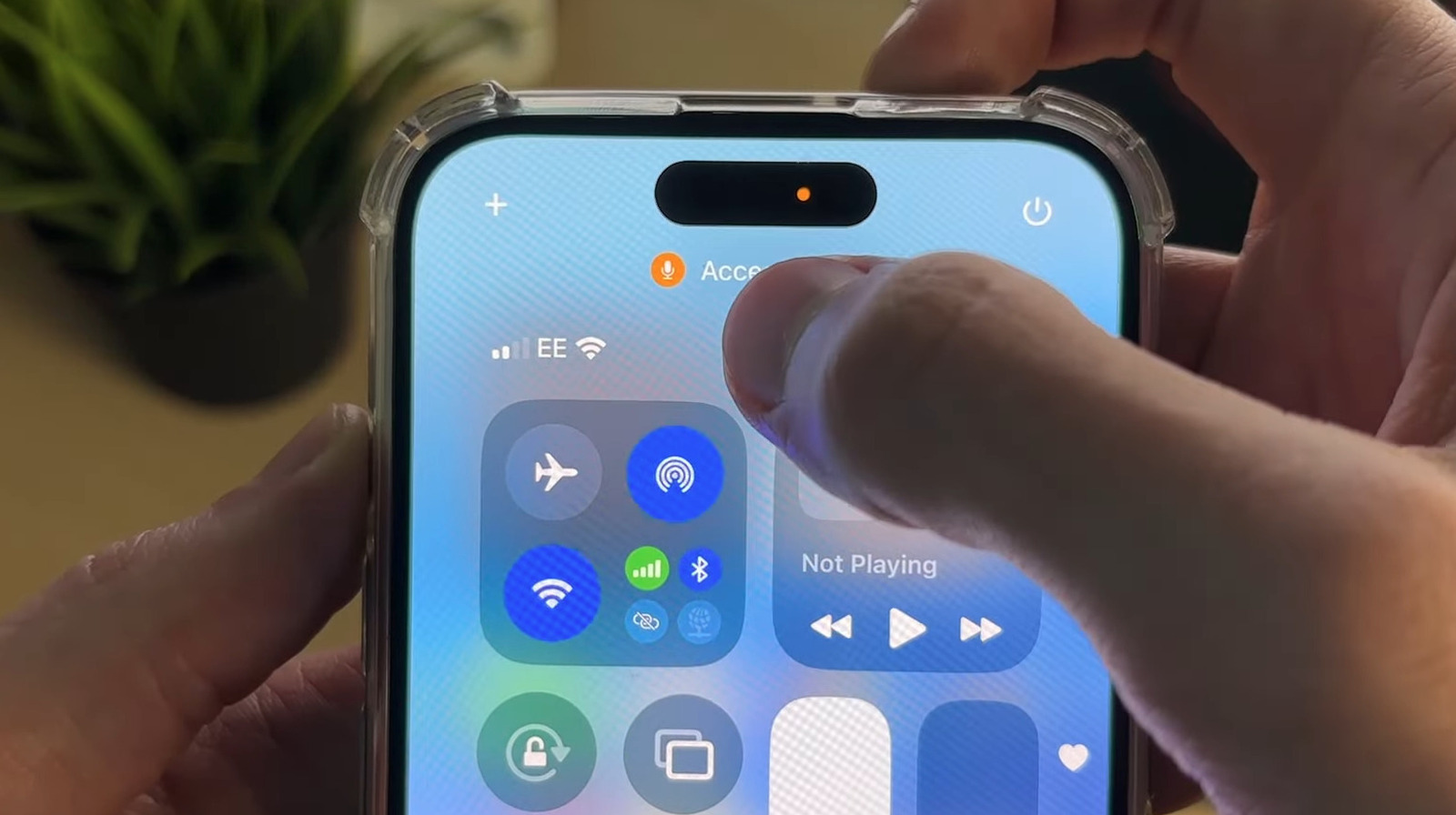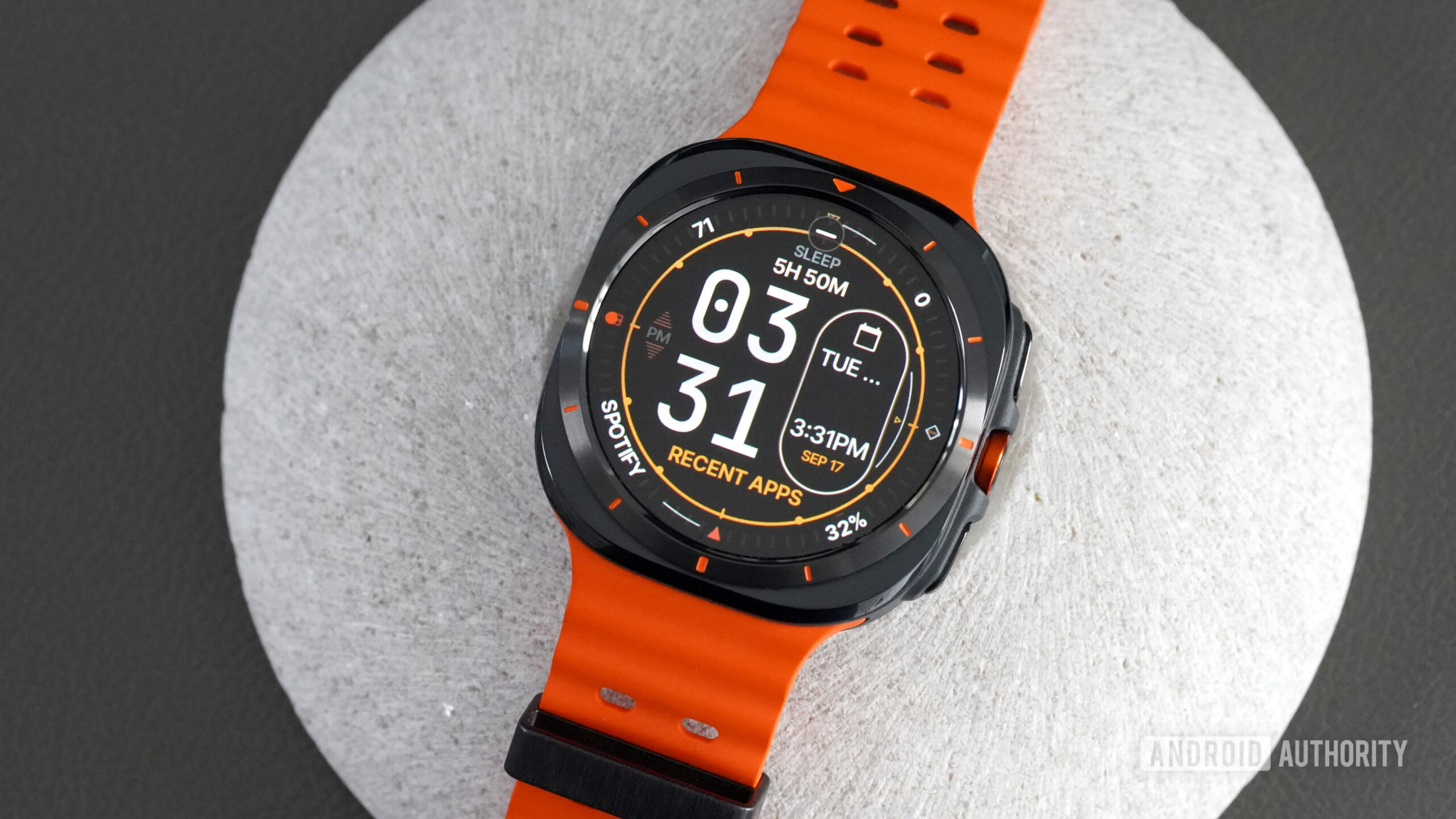I rarely find one of the best Bluetooth speakers priced below $40, so when JLab announced its new Go Party speaker was just $34, I was very intrigued. I love other JLab gear — the JBuds Lux ANC headphones are, to date, the only budget headphones I’ve ever recommended — so I was desperate to try out this speaker.
And what’s the verdict? Well, it sounds like it costs $34 — for better or worse. I found the sound quality easy to overlook, though, as the speaker is so very cheap and party speakers tend not to be bastions of sound quality.
The Go Party is a very good speaker for the price, but I would rather spend a bit more and get a better-sounding speaker. If you’re after one of the most affordable speakers on the market, though, keep reading this JLab Go Party review.
JLab Go Party review: Cheat sheet
- What is it? A portable party speaker with an IP56 rating for very little money
- What does it cost? $34 / £39 (or £19 from Argos)
- What do we like? Very affordable — $34 for a portable speaker is pretty crazy
- What don’t we like? I’m a bit on the fence with this: The sound quality is what you’d expect from a $34 speaker. But is that even a bad thing?
JLab Go Party review: Specs
|
Price |
$34 / £39 |
|
Connectivity |
Bluetooth 5.3 |
|
Durability |
IP56 |
|
Battery |
16 hours (no lights), 8 hours (lights) |
|
Weight |
1.5 pounds |
|
Dimensions |
8.3 x 3.1 x 3.1 inches |
|
Colors |
Black, blue, pink |
|
Compatibility |
iOS, Android |
JLab Go Party review: Price & availability
The JLab Go Party has a few different prices depending on where you look. On Amazon U.S., the Go Party is priced at a pretty unreasonable $59, but on JLab’s U.S. website, it’s a much nicer $34. You can also find it on Walmart for $29 and Best Buy for $29, both of which I’d recommend over the Amazon option.
Similarly, you’ll find contradictory pricing on the other side of the pond, too. The Go Party seems to be unavailable on Amazon U.K., but is available for £24/£39 direct from JLab (+£20 shipping). I would grab it on Argos instead, where it’s priced incredibly low: just £19 from Argos in the U.K.
As a result, I’m not really too sure what the MSRP actually is. It makes sense to go with the price on JLab’s website, so let’s stick with $34/£39. If I were you, though, I’d buy it from Argos in the U.K. to save yourself literally £40.
$34/£39 is an incredibly low price for a Bluetooth speaker: most of the speakers I’ve tested or own will run you back closer to $100. I have the Fender x Teufel Rockster Go 2 at home, which I love. It costs $129, though, much pricier than the JLab Go Party. Similarly, my parents have the JBL Flip 7 ($149), which I always look forward to using when I visit.
At the cheaper end of the speaker spectrum, you’ll find the Soundcore Motion 300 ($79), which is almost certainly a Bose SoundLink Flex 2 ($149) dupe. Honorable mentions must go to the Tribit XSound Plus 2 ($69) and the Tozo PE1 ($34), which both have impressive sound quality for the price.
Obviously, the sound quality on the Fender, JBL, and Bose speakers is much superior to that of the JLab Go Party, but the Go Party is quite literally $100 cheaper than much of the competition.
JLab Go Party review: Design & controls
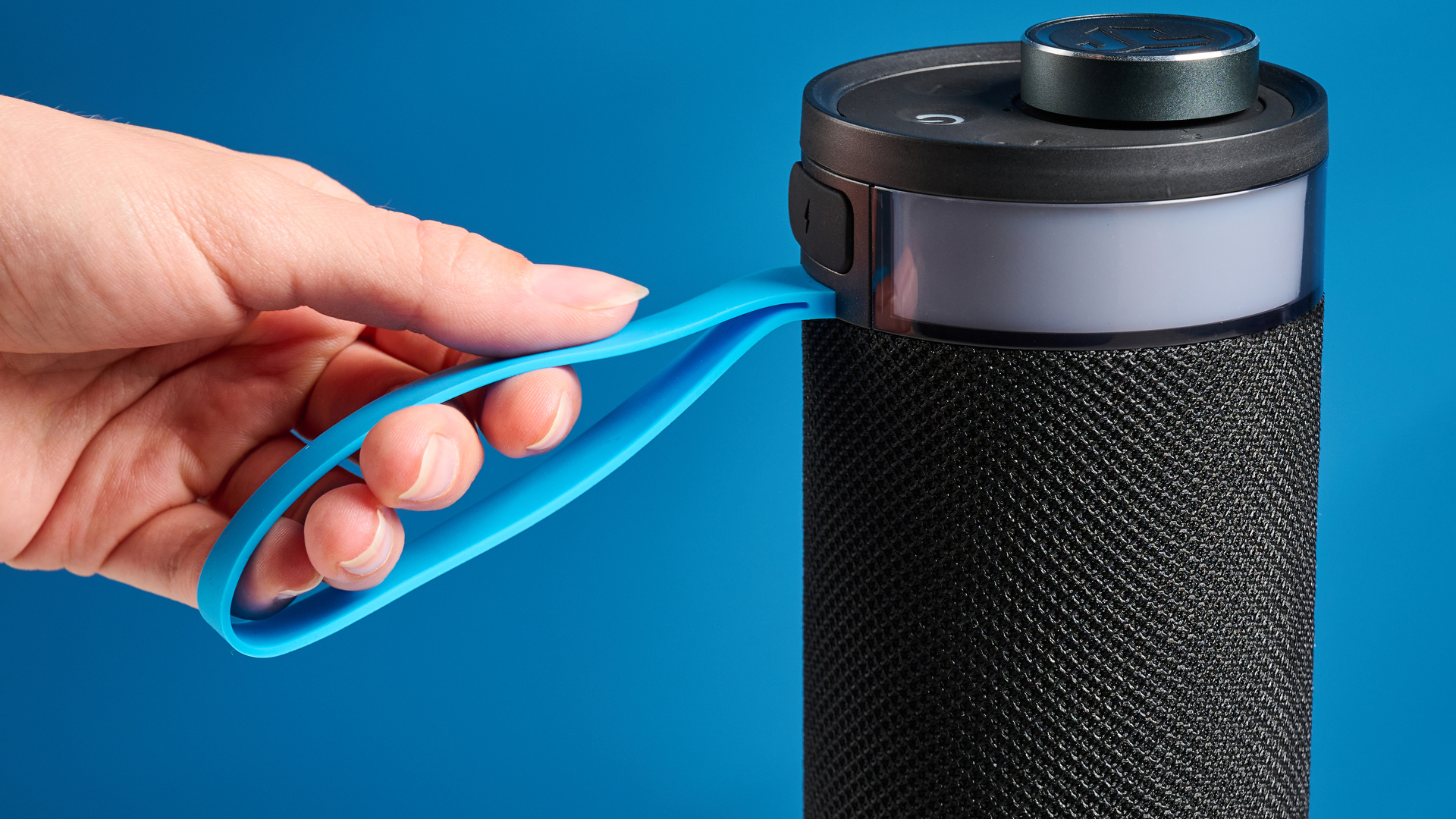
- RGB panel
- Mesh fabric casing
- Looks kinda outdated already
Even though the Go Party only came out a month ago, it looks a little outdated already. The finish is plasticky, and the fabric mesh gives a budget vibe. On top of that, it’s surprisingly heavy — much heavier than the JBL Flip 7’s 1.2 pounds.
I mean, it’s a budget speaker, so you can’t really ask for the world. If there is going to be a JLab Go Party 2, I’d like to see it take more design influence from the rugged JBL Flip 7.
The RGB panel sits at the top of the speaker, and above it is the control panel. You can turn the speaker on/off, play next, play previous, and even change EQs using these buttons. It’s really nice that you don’t have to download the app to adjust the EQ, but obviously, you can’t completely customize these settings without the app.
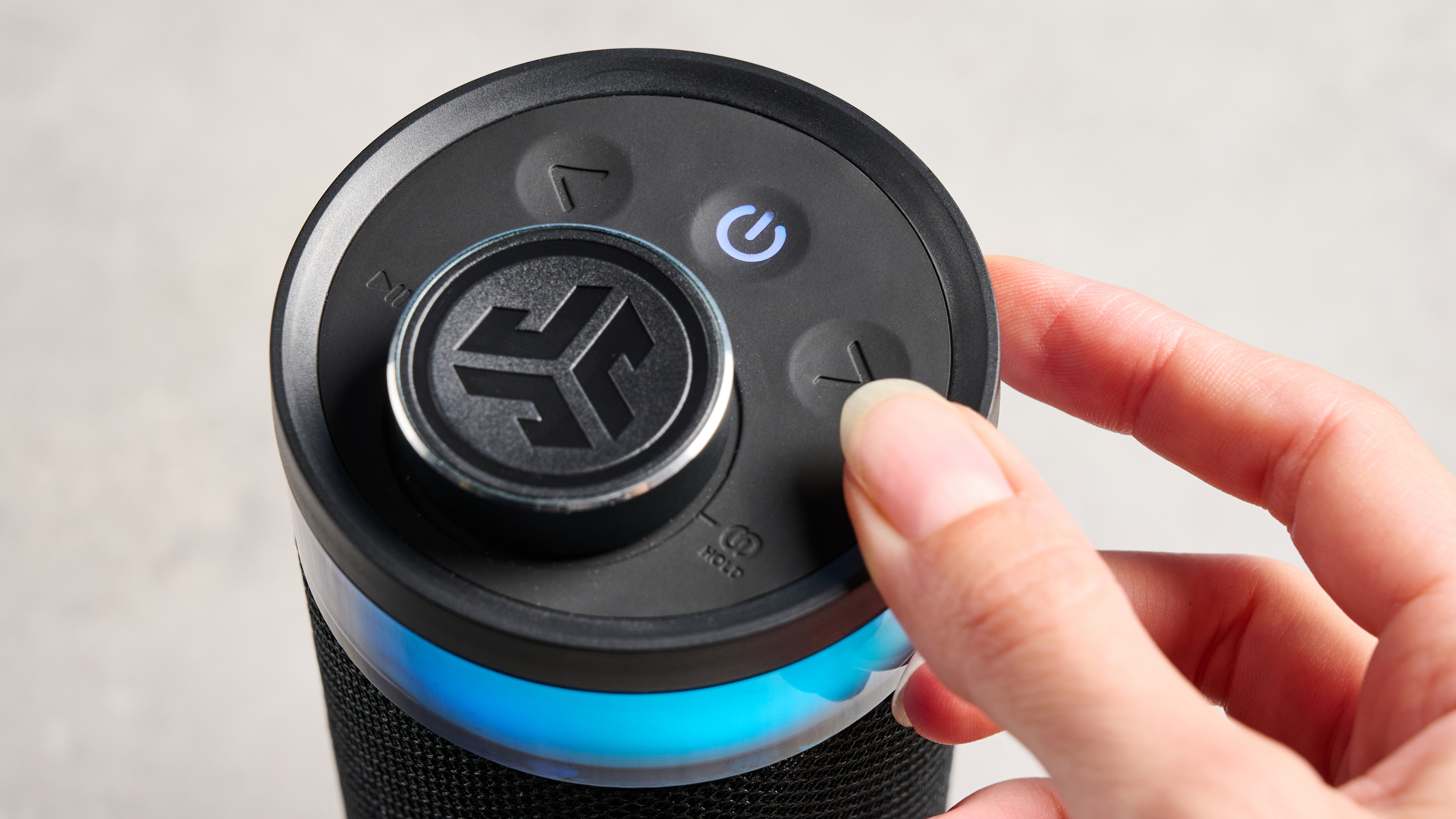
I also really like the volume dial: it’s satisfying to actually control the volume manually, rather than just have tactile buttons on the side of the speaker. I had way too much fun turning this dial, and if you think that makes me sound sad and pathetic, you’d be right.
The rest of the speaker is, again, quite unassuming and outdated. There’s a passive radiator at the base of the speaker, so when the speaker plays, it vibrates onto the surface. I found this actually amplified and softened rather than minimized the sound.
I’ll end on a positive note, though: the Go Party is available in both blue and pink, which tackle the whole looking-outdated issue prevalent on the black model (which is what I tested). I personally would have bought the pink version, as it looks a little more trendy.
JLab Go Party review: Features & connectivity
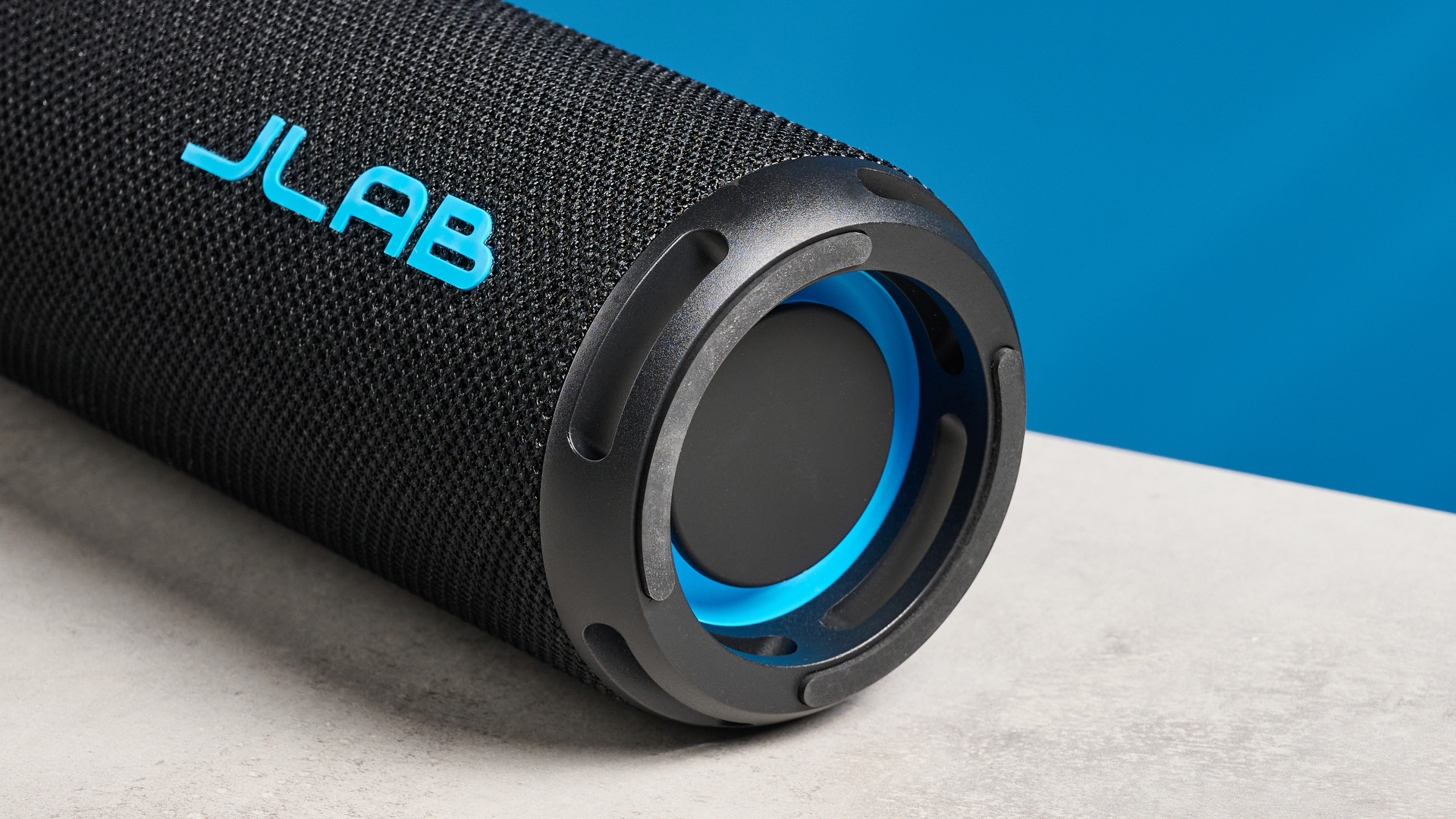
- IP56
- Bluetooth 5.3
- Custom EQ, party mode
The JLab Go Party has an IP56 durability rating, which means it would survive a beach trip or a pool party, but I wouldn’t go submerging it in a lake or anything. Other speakers like the JBL Flip 7 and the Bose SoundLink Flex 2 are IP68 and IP67 respectively, but obviously these speakers will run you back much more $$$.
For the budget price of $34, I’m really impressed with the Go Party’s IP rating. The similarly priced Tozo PE1 ($34) has an IPX8 rating, which means it’s not dustproof, but more waterproof than the Go Party. It’s swings and roundabouts, really.
In terms of features, the Go Party has more than its $34 price tag would suggest. You can customize the EQ fully in the JLab app, or you can choose from pre-made EQs. I found that custom EQs really helped the sound quality, so I’d 100% recommend downloading the companion app to get the best out of the speaker.
The Go Party also has party mode — sorry, ‘LabSync’. This means you can pair it up with another speaker during parties for even louder sound, or simply if you want to annoy your neighbors. I found this a bit annoying to activate: In theory, you turn on the Caster, then turn on LabSync using the volume dial, and then turn on the Receiver, but it took me three tries to get it going. Maybe I’m the problem.
Anyway, once the speakers were synced up, I had a great time. I played several tracks and had the entire desk shaking. Other cheap speakers like the Tribit XSound Plus have party mode, so this isn’t a JLab-only feature, but either way, LabSync greatly improves the sound quality and volume.
JLab Go Party review: Audio quality
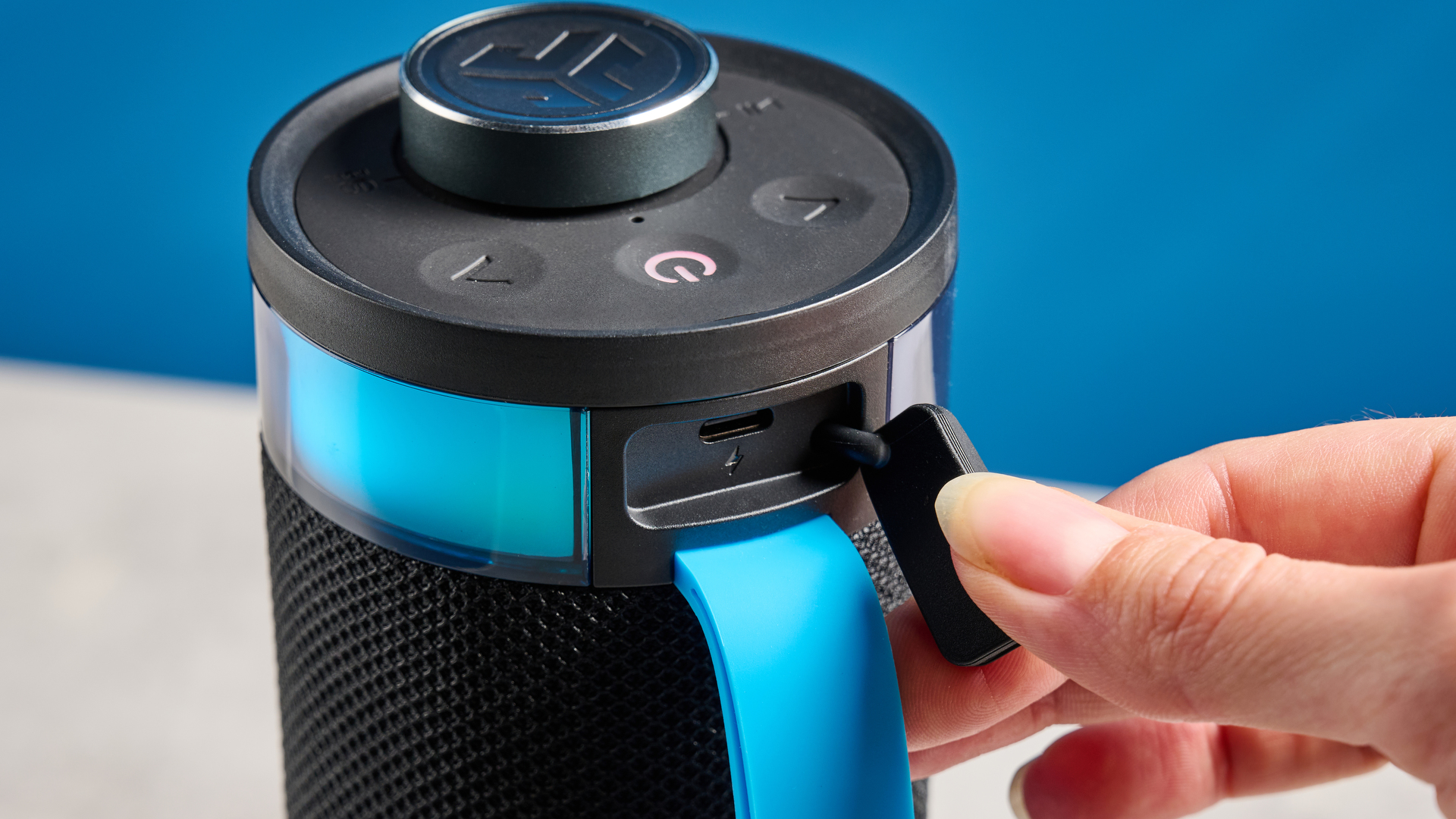
- Loud but soft bass
- Melodic mids and treble
- Sounds like what you’d expect from a $34 speaker, for better or for worse
To test the JLab Go Party, I listened to a range of genres on Qobuz, our best music streaming service for audiophiles.
I’m just going to repeat what I said earlier: this is not a hi-fi speaker, and it doesn’t claim to be. You will not be getting any detail or nuance in the sound quality. But, the clue is quite literally in the name: JLab Go Party. This is a party speaker. It’s not for serious listening sessions. As long as you can make out the overall melody of the track, the speaker’s done its job.
I played ‘RIDING WITH MY GIRLS’ by Die Spitz, which is a heavy rock song with an electric riff and metal-inspired percussion. This song didn’t sound great: It sounded a little like it was coming from underwater. Even so, the vocals were clear. I upped the bass in the JLab app, which negated the underwater issue, so I’d recommend downloading the companion app to get the best out of your speaker.
Afterwards, I switched to a more party-forward genre. I played ‘Real Move Touch’ by Confidence Man, which is a bassy ‘90s house track. The bass synth was a little muffled, but the midrange instrumentation sounded great. The vocals were also good, but I was still left wanting a touch more.
Last, I switched genres to alternative. I played ‘Billie Toppy’ by Men I Trust, which has a guitar-led bassline and breathy female vocals. This song sounded the best out of all the songs I played. As soon as it started, my colleagues turned to me and said, “Ooh, that one sounds great.”
The bass was quite soft, but in a way that benefitted the rest of the sparse soundscape. The main instrument is the bass, so I assume the speaker didn’t have many other sounds to decode. Either way, this track was really great.
In short, the JLab Go Party sounds like what you’d expect from $34. Trust me, I’ve heard worse speakers, but I’ve also heard better (for more $$$). I would never buy this as my primary speaker, but if you need to soundtrack a party in a pinch, I would recommend this for just $34.
JLab Go Party review: App
- JLab app
- Easy to use
- Looks like a standard budget audio app
I like the JLab app. It’s clean, easy to use, and perfect for beginners. You can control EQ, LED light colors, update firmware, control battery life settings, and activate voice prompts for smart features.
Here are a few screenshots from the app.
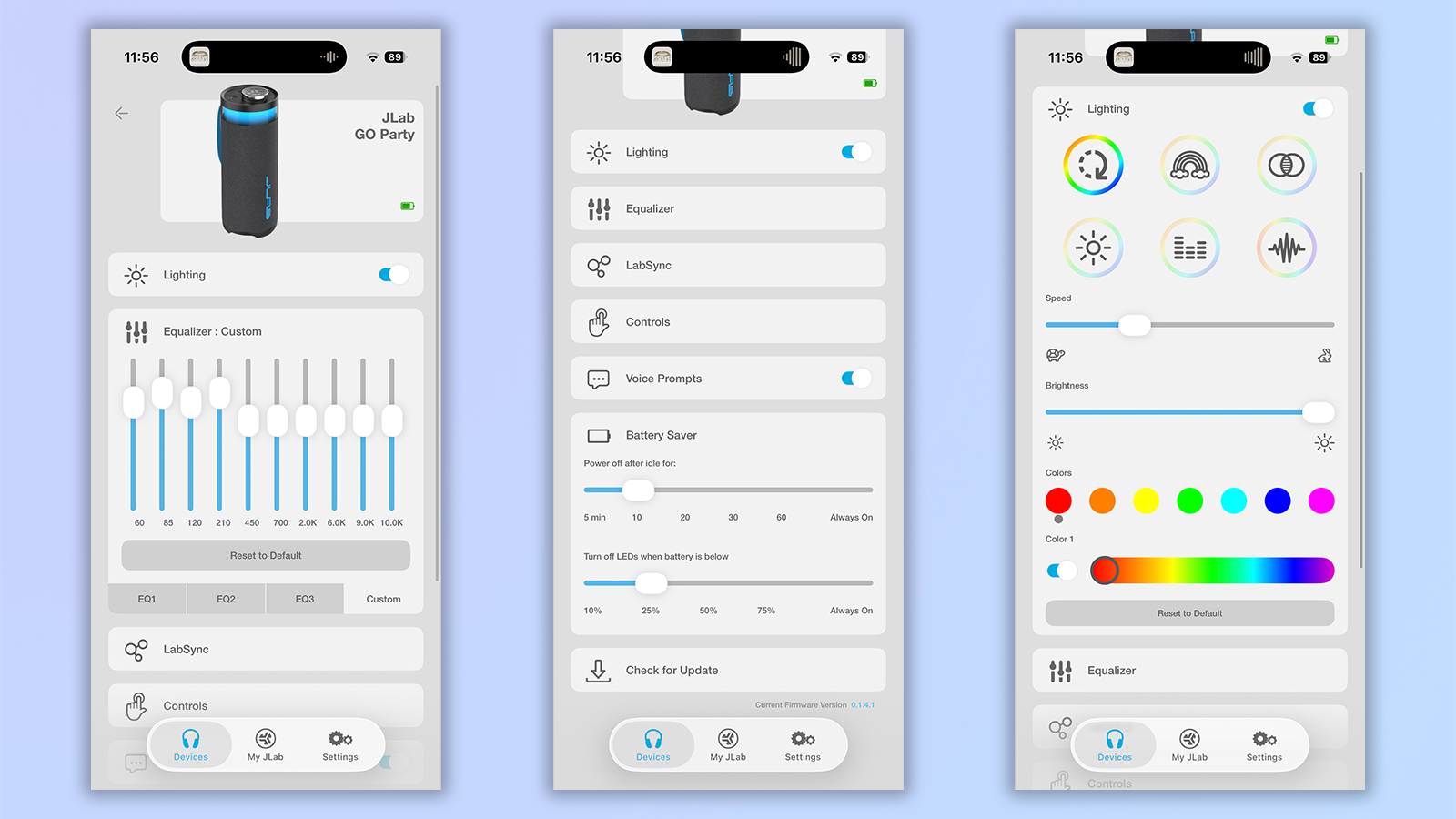
As you can see, you can do everything you’d want to. The app isn’t cluttered or messy, and there are easily navigable menus throughout. I really like this app — in my opinion, it looks much better than JBL’s companion app, that’s for sure.
JLab Go Party review: Battery
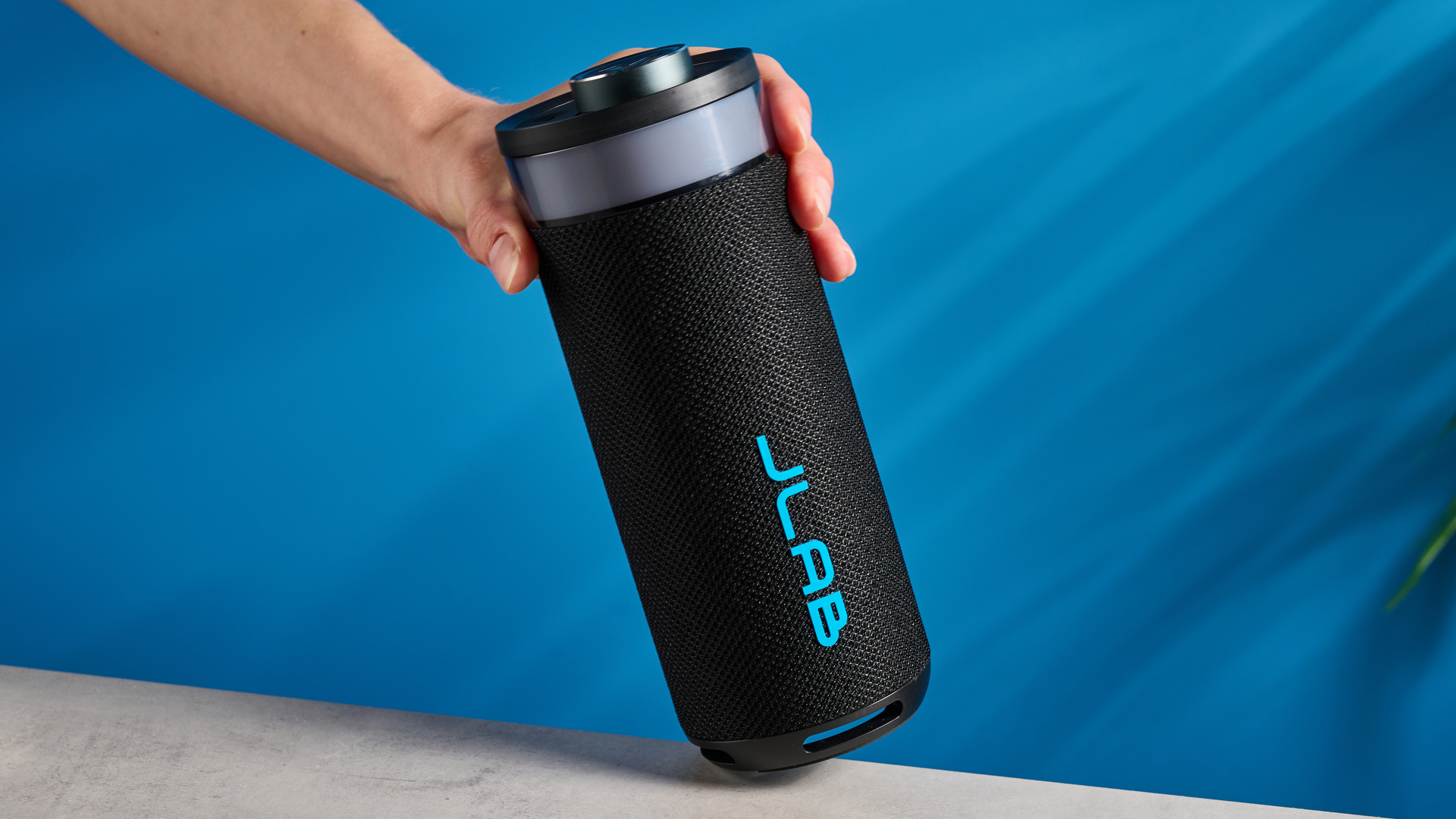
- 8 hours with lights
- 16 hours without lights
- Equal to JBL Flip 7
The Go Party lasts for 16 hours without the LED lights and eight hours with the LED lights. Seeing as one of the main features of the Go Party is the LED lights, I only listened with the lights dancing around like the disco gods themselves intended. After a couple of hours of playback at high volumes and in LabSync mode, I had about 70% battery remaining, so I’d say the 8 hours with lights is an accurate rating.
Recharging is easy with the provided USB-C cable, and you can play music while it’s charging. Your party doesn’t have to die when the speaker does.
This battery life is comparable to the JBL Flip 7, which also taps out at 16 hours, and while the Tozo PE1’s rated battery life is 32 hours, we found it more like 15 hours in testing. I wouldn’t buy the Go Party purely due to its battery life, but it’s a reliable speaker that can withstand a house or pool party.
JLab Go Party review: Verdict

For $34, the Go Party is a pretty good speaker. Does it sound amazing? No. Does it look amazing? Also, no. But is it great value? 100% yes. I don’t doubt that the JLab Go Party will be able to soundtrack your parties and gatherings with gusto.
The IP56 rating is a nice feature to have — especially for just $34 — and is great peace of mind for taking the speaker out and about. On top of that, LabSync party mode makes the speaker sound much better, and the LED lightshow is weirdly addictive to watch.
Personally, I would like to spend a little more for a better-sounding speaker like the JBL Flip 7 or the Fender x Teufel Rockster Go 2, but if you’re on a low budget and you want a room-filling speaker, I wholeheartedly recommend the Go Party. Just don’t expect to please audiophiles.








